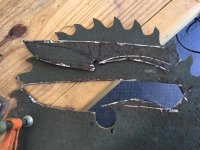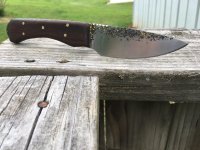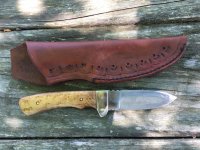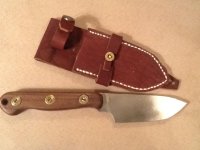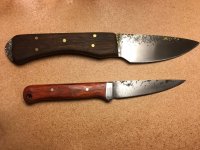I used this old saw blade to make this knife. I used a 1" belt sander to shape the blade and a 4-1/2 inch disc grinder to cut the shape from the circular saw. The second knife is an old Rigid knife blank I had in a kit form from the early 70's. I made the leather sheath for this one. I would also like to advance this skill as well. Since I retired this is something I might pursue.
Anyone else have home made knives to show? I hope to get past the primitive stage soon and start turning out some nice ones!
Thanks for looking
Anyone else have home made knives to show? I hope to get past the primitive stage soon and start turning out some nice ones!
Thanks for looking
Attachments
Last edited:

